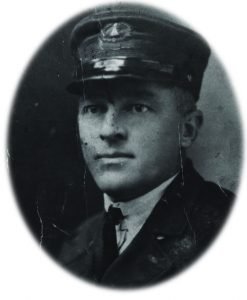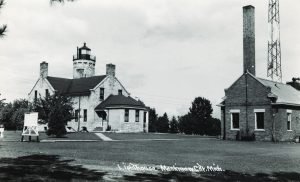November storms on the Great Lakes are infamous for their ferocity and violence. Some, such as the Great Storm of 1913, which sank 12 ships and killed over 250 people, or the 1975 storm that sank the Edmund Fitzgerald, are well known. In November 1940, another strong storm struck the Great Lakes and caused widespread damage, including in the Straits of Mackinac.

On November 11 (Armistice Day, now known as Veteran’s Day), a low pressure system with warm, moist air from the Gulf of Mexico collided with a cold, artic air mass over northern Wisconsin, forming a blizzard. Henrik Olsen, the acting keeper at the Old Mackinac Point Light Station, recorded the deteriorating weather conditions in his daily log book. As the station barometer fell to 28.43, Olsen reported that the wind swung around from the southeast to the southwest and strengthened to gale force, while rain turned to snow flurries. The wind and snow obscured the lights from the nearby St. Helena lighthouse as well as the buoys in the straits. Old Mackinac Point lost power, forcing Olsen to switch to an emergency electrical generator and run a gas-powered air compressor to sound the fog horns. The blizzard continued on November 12, and Olsen had to purchase 70 gallons of gas to keep the generator and air compressor running. He also reported that one of the buoys on Graham’s Shoal in the middle of the straits had blown away, while the other buoy on the shoal remained unlit. Heavy snow continued on November 13 as the storm abated, and Olsen reported that at least three ships had been driven ashore on and around St. Helena Island, just a few miles away in Lake Michigan. Two of these vessels, the steamers Bethlehem and Peterson, remained aground several days later, with the Peterson ultimately abandoned for the winter.

Although Olsen and Old Mackinac Point weathered the storm relatively intact, the blizzard caused destruction across the Midwest. In addition to property damage, the storm killed 145 people and sank three freighters on Lake Michigan. Although destructive, the Armistice Day Storm revealed the continued need for light stations like Old Mackinac Point and dedicated keepers like Henrik Olsen.









